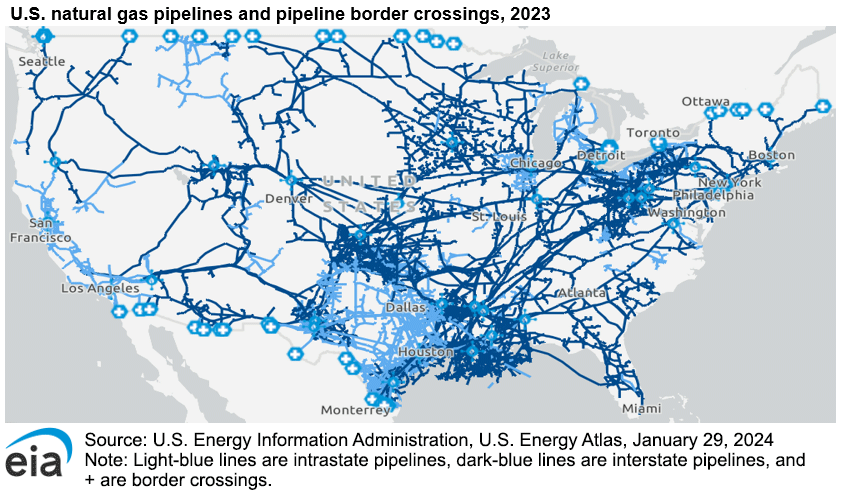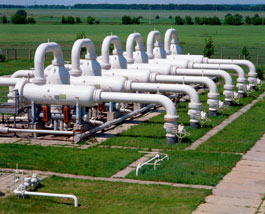The U.S. natural gas pipeline network is a highly integrated network that moves natural gas throughout the continental United States. The pipeline network has about 3 million miles of mainline and other pipelines that link natural gas production areas and storage facilities with consumers. In 2022, this natural gas transportation network delivered about 29.2 trillion cubic feet (Tcf) of natural gas to about 78.3 million consumers.
What makes up this transportation network?
Transporting natural gas from production areas to consumers involves a series of steps that are generally carried out in the following order:
- Gathering systems, primarily made up of small-diameter, low-pressure pipelines, move raw natural gas from the wellhead to a natural gas processing plant or to an interconnection with a larger mainline pipeline.
- Natural gas processing plants separate hydrocarbon gas liquids, nonhydrocarbon gases, and water from the natural gas before the natural gas is delivered into a mainline transmission system.
- Wide-diameter, high-pressure interstate transmission pipelines that cross state boundaries and intrastate transmission pipelines that operate within state boundaries transport natural gas from the producing and processing areas to storage facilities and distribution centers. Compressor stations (or pumping stations) on the pipeline network keep the natural gas flowing forward through the pipeline system.
- Local distribution companies deliver natural gas to consumers through small-diameter, lower pressure service lines.
How did this transmission and distribution network become so large?
About half of the existing mainline natural gas transmission network and a large portion of the local distribution network were installed in the 1950s and 1960s because consumer demand for natural gas more than doubled following World War II. The distribution network has continued to expand to provide natural gas service to new commercial facilities and housing developments.
Natural gas prices increased substantially between 2003 and 2008. Higher prices gave natural gas producers an incentive to expand development of existing fields and to begin exploration of previously undeveloped natural gas fields. Advances in drilling and production techniques led to increases in natural gas production and transportation (and hydrocarbon gas liquidshydrocarbon gas liquids) from shale and other tight geologic formations. These increases in production contributed to general declines in average annual natural gas prices from 2008 through 2020, which in turn, contributed to increases in demand for natural gas for electricity generation, industrial processes, and export. As a result, new transmission pipelines were constructed and others are being built to link the expanded and new production sources to more consumers around the country, notably in the Northeast.
Last updated: March 19, 2024.


